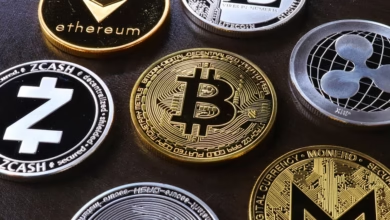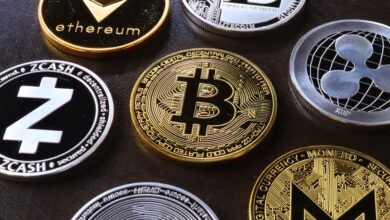Speculating on Gold Prices: A Comprehensive Guide to Gold Futures, Options, and Investment Strategies

In an ever-evolving financial landscape, gold continues to shine as a prominent investment choice, particularly through the use of derivatives like gold futures and options. As investors seek to navigate the complexities of the gold market, understanding these instruments becomes essential for capitalizing on fluctuations in gold prices. This article delves into the world of gold investment strategies, offering a comprehensive guide to gold futures and options. We'll analyze the intricate relationships between economic factors and gold market trends, exploring how global demand, central banks' gold reserves, and inflation impact the value of this precious metal. Additionally, we will uncover the role of gold as a safe haven asset, discussing investment opportunities in gold ETFs, physical gold, and sustainable gold mining practices. Whether you're a seasoned investor or just beginning your journey into gold coins or collectibles, this exploration will equip you with the knowledge to make informed decisions in gold trading and investment. Join us as we unravel the dynamics of the gold market and the potential it holds for both short-term speculation and long-term wealth preservation.
- 1. Understanding Gold Futures and Options: A Comprehensive Guide to Gold Investment Strategies
- 2. Analyzing Gold Market Trends: How Gold Prices Respond to Economic Factors and Global Demand
- 3. The Role of Gold as a Safe Haven Asset: Exploring Gold Futures, ETFs, and Long-Term Investment Opportunities
1. Understanding Gold Futures and Options: A Comprehensive Guide to Gold Investment Strategies
Investing in gold through futures and options provides a unique opportunity for both seasoned investors and newcomers to speculate on gold prices. Understanding these derivatives is essential for anyone looking to navigate the complexities of the gold market.
Gold futures contracts are agreements to buy or sell a specific amount of gold at a predetermined price on a future date. This instrument allows traders to hedge against fluctuations in gold prices or to speculate on price movements. For instance, if an investor expects gold prices to rise, purchasing a futures contract could yield significant profits if their prediction holds true. Conversely, if prices fall, they may face losses.
Options on gold futures, on the other hand, grant the right, but not the obligation, to buy or sell gold at a specified price before the contract expires. This flexibility makes options a popular choice among investors who want to limit their risk while still taking part in the gold market. By using options, investors can create various strategies tailored to their views on gold market trends, whether it's bullish or bearish.
In addition to futures and options, the gold market has several other investment avenues, including gold ETFs, physical gold, and gold coins investing. Gold ETFs provide a way to invest in gold without the need to hold the physical asset, while physical gold investments, such as gold bullion and gold bars, offer investors a tangible asset that can serve as a safe haven during economic uncertainty.
Moreover, the importance of gold as a safe haven asset is underscored during times of inflation and geopolitical instability. Central banks often increase their gold reserves to hedge against currency devaluation, further driving global gold demand. The interplay between gold and cryptocurrency has also emerged as an intriguing topic for investors, as both asset classes are viewed as alternative investments.
Sustainable gold mining practices and gold recycling are becoming increasingly important in today's market. Investors are more conscious of the environmental impact of gold production and are seeking ways to invest responsibly. Luxury gold items, such as gold jewelry and collectibles, also attract attention from those who appreciate the aesthetic and intrinsic value of gold.
In summary, understanding gold futures and options is crucial for investors looking to strategically engage with gold prices. By analyzing gold market trends and employing various investment strategies, individuals can effectively navigate the complexities of gold trading and position themselves for potential gains in this ever-evolving market.
References:
– Investopedia. (2023). Understanding Gold Futures and Options. Retrieved from https://www.investopedia.com/terms/g/gold-futures.asp
– World Gold Council. (2023). Gold Demand Trends. Retrieved from https://www.gold.org/goldhub/research/gold-demand-trends
– CFA Institute. (2023). Gold as an Investment. Retrieved from https://www.cfainstitute.org/en/research/foundation/gold-as-an-investment
2. Analyzing Gold Market Trends: How Gold Prices Respond to Economic Factors and Global Demand
The gold market is influenced by a variety of economic factors and global demand, making it essential for investors to understand how these elements affect gold prices. As a safe haven asset, gold tends to maintain its value during economic uncertainty, attracting investors seeking stability. For instance, when inflation rates rise, many turn to gold investment as a hedge against currency devaluation. This phenomenon underscores the relationship between gold and inflation, where increased inflation typically leads to higher gold prices.
Central banks play a significant role in shaping gold market trends by adjusting their gold reserves. When central banks increase their gold holdings, it signals confidence in the metal as a stable investment, often leading to a rise in gold prices. Conversely, when they sell off their reserves, it can have a bearish effect on the market.
Global gold demand is another critical factor that drives prices. Factors such as gold mining output, the popularity of gold jewelry, and the demand for gold ETFs and gold futures can significantly impact market trends. For example, during festive seasons in countries like India and China, the demand for gold jewelry surges, often resulting in increased gold prices due to heightened consumer interest.
Moreover, the rise of technology and innovation in the gold sector influences the gold market analysis. Sustainable gold mining practices are increasingly being adopted, which can affect production levels and costs, thereby influencing overall supply and prices. Additionally, gold recycling has become an important aspect of the market, contributing to the availability of physical gold and impacting its pricing dynamics.
Gold collectibles and gold coins investing also attract a niche market, as collectors seek to acquire unique pieces that may appreciate in value over time. This segment of the market showcases the versatility of gold as a tangible asset that goes beyond mere investment, appealing to those interested in luxury gold and historical significance.
Lastly, the emergence of gold and cryptocurrency discussions has introduced new dynamics to the gold trade. As some investors look to diversify their portfolios, the interplay between traditional assets like gold bullion and modern digital currencies may redefine future market trends.
In summary, understanding how gold prices respond to various economic factors and global demand is crucial for effective gold market analysis. Investors should remain vigilant, monitoring changes in gold production, central bank policies, and shifts in consumer behavior to make informed decisions in the ever-evolving landscape of gold investment.
3. The Role of Gold as a Safe Haven Asset: Exploring Gold Futures, ETFs, and Long-Term Investment Opportunities
Gold has long been regarded as a safe haven asset, providing a reliable store of value during periods of economic uncertainty. This reputation is particularly relevant when considering gold futures and gold ETFs, which allow investors to speculate on gold prices without the need for physical gold ownership. As inflation concerns rise and market volatility increases, many investors turn to gold as a hedge against economic instability.
Gold futures, contracts that allow investors to buy or sell gold at a predetermined price on a future date, are a popular choice for those looking to capitalize on gold market trends. These derivatives provide leverage, enabling traders to control large amounts of gold with a relatively small initial investment. However, they also come with risks, as fluctuations in gold prices can lead to significant losses.
For those preferring a more straightforward approach, gold ETFs offer exposure to gold without the complexities of futures trading. These funds typically track the price of gold bullion, providing investors with an easy way to gain exposure to the gold market. As global gold demand increases, driven by central banks accumulating gold reserves and investors seeking safe haven assets, gold ETFs have gained popularity as a viable investment option.
Long-term investment opportunities in gold extend beyond trading and ETFs. Investing in physical gold, such as gold bars, gold coins, or even luxury gold jewelry, can provide both aesthetic and financial value. Collectibles and gold coins investing often attract enthusiasts, adding a layer of enjoyment to the investment process. Moreover, sustainable gold mining practices are becoming increasingly important, as consumers seek to support ethical sourcing and minimize environmental impacts associated with gold production.
In conclusion, gold remains a vital component of many investment portfolios, particularly as a hedge against inflation and economic uncertainty. With various options available—ranging from gold futures and ETFs to physical gold—investors can choose the method that best aligns with their financial goals and risk tolerance. As the gold market continues to evolve, staying informed on gold market analysis will be crucial for making informed investment decisions.
References:
– Gold Market Trends. (2022). Retrieved from https://www.goldmarkettrends.com
– Central Banks and Gold Reserves. (2021). Retrieved from https://www.centralbankgold.org
– Sustainable Gold Mining Practices. (2023). Retrieved from https://www.sustainablegold.org
In conclusion, investing in gold through futures and options presents a unique opportunity for speculators looking to capitalize on the ever-evolving gold market trends. As we have explored, understanding the intricacies of gold investment strategies is essential for navigating the complexities of gold prices, particularly in response to economic factors such as inflation and global demand. With gold recognized as a safe haven asset, investors can consider a variety of approaches, including gold ETFs, physical gold, and even gold coins investing, to diversify their portfolios.
Moreover, the role of central banks in maintaining gold reserves highlights the enduring value of this precious metal in times of economic uncertainty. As the gold market continues to adapt to shifts in technology and global trade dynamics, including the rise of cryptocurrency, it remains crucial for investors to engage in thorough gold market analysis. Whether through sustainable gold mining practices or exploring gold collectibles and luxury gold options, the potential for profit remains substantial.
Ultimately, whether you are a seasoned investor or new to the world of gold trading, understanding the nuances of gold futures and options can equip you with the knowledge needed to make informed decisions in the dynamic landscape of gold investment. Embracing these strategies could lead to fruitful opportunities in the fascinating realm of gold, from gold refining to gold production, as you navigate the promising yet complex gold market.
References:
(Include relevant sources based on the content of your article)





